Sevilla, Spain, April 1st - 10th, 1910
The first air race meeting in Spain - or a Blériot marketing event?
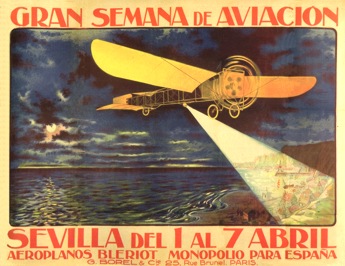
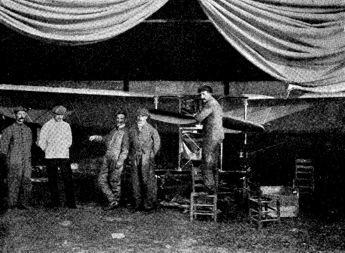
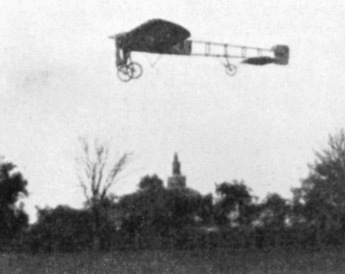
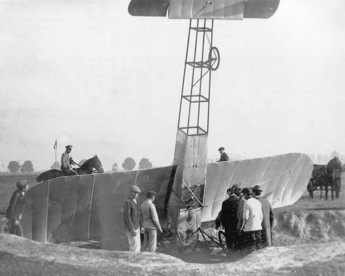
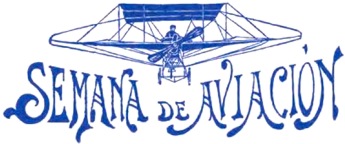
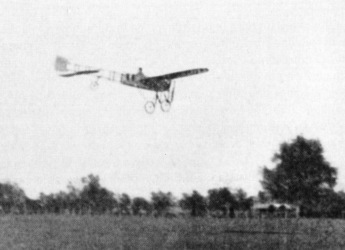
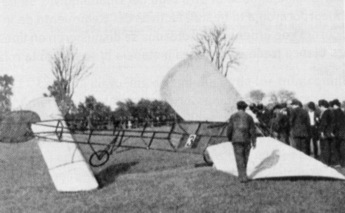
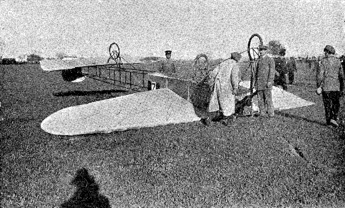
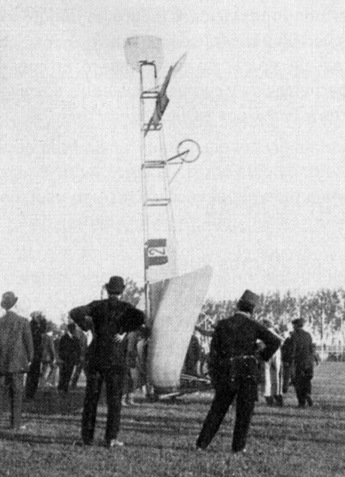
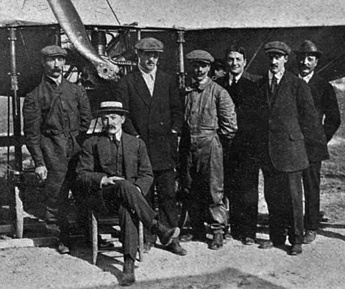
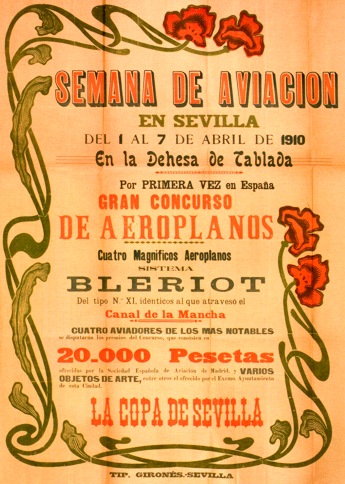
Like everywhere else in the world, aviation interest started to
grow in Spain. During 1909 discussions about an aviation event
started in Seville, then as now Spain's fourth biggest town,
with a long history from Roman and Moorish times. In 1910 it had
around 155,000 inhabitants and a healthy trade in agricultural
produce and ores, thanks to the harbour on the Guadalquivir river,
which although 87 kilometres from the sea still could handle large
ships. Important industries included the big tobacco factories,
which employed no less than 5,000 women.
The tourist industry wanted to develop a "winter season"
and during the winter plans were drawn up for an aviation week in
the beginning of April, as part of the town's spring festival.
The decision to go ahead was given by the city council on January
10th. This started an intense procedure of finding a partner who
could stage the events and contract the right flyers.
After several contacts and investigations an agreement was finally
made in the end of January with a consortium including Gabriel
Borel & Cie, the Blériot agents with exclusive rights for Spain,
and the newly formed Sociedad Española de Aviación. The consortium
would guarantee the participation of four competent Blériot pilots
and manage the entire event. The city would not take any financial
risks, but undertook to make the airfield available. There would
not be cash prizes, but trophies of different kinds for four
different contests.
When the first program was printed the pilots were announced as
Claude Grahame-White, Jacques de Lesseps and the mysterious
"Carrier" and "Planchat", who might have been
erroneously named since no pilots of these names are known. In the
event none of these would turn up. The actual competitors would be
Belgians Jan Olieslagers and Jules Tyck and Frenchmen Louis Kuhling
and René Barrier. Olieslagers was the most experienced of the
pilots, having participated in the Antwerp meeting, but none of
them had yet qualified for their licenses.
The site chosen was the Tablada fields, which were owned by the
city and apart from pasture used for activities like bullfights,
horse racing and football.
The aviators arrived by train on the morning of March 26th. After
visiting the mayor they inspected the airfield, which they found
perfect, covered with short, dense grass which allowed take-offs
and landings in all directions. On the following day the three huge
crates (7.3 by 2.3 by 2 meters) containing the airplanes were
transported to the airfield with the help of mules. The planes were
assembled and ready to fly on March 28th, and in the late afternoon
Olieslagers made the first flight. This three-minute flight was
followed by a second of eighteen minutes, during which he reached a
height of 100 metres.
The day before the meeting there was private invitation event for
the press and authorities. Kuhling made a demonstration flight
across the river to the nearby village of San Juan de Aznalfarache
and back. When landing he had to pass below some telephone lines
and after landing he ran into a hole in the ground, which put the
plane on its nose. Kuhling was not injured and the plane was only
lightly damaged. The reason why he didn't spot the hole was
that some children had stolen the flags that marked it. The
organizers immediately decided that they would increase the
security around the airfield by an additional squadron of
cavalry.
Friday April 1st
The morning of the first day started with strong winds, but white
flags still optimistically indicated that flights were probable. At
half past three, when flying was supposed to start and large crowds
had gathered, the weather hadn't improved. It would be a long
windy afternoon without reward for the crowds. At half past five a
blue flag was hoisted to signal that flights were postponed until
the next day and the disappointed crowd started to leave. But when
the field was almost empty the wind suddenly calmed down and
Olieslagers grabbed the opportunity, making a flight of five
minutes, reaching a height of sixty metres. After landing below the
grandstands he impressed the few still remaining at the field by
getting out of the stationary plane, pull the propeller himself to
start the engine and then climb back into the rolling plane to taxi
it back to the hangars.
Saturday April 2nd
The next day the announced time for the start of flying was
postponed to four o'clock. The public was reminded to be
patient with the flyers since flying was dependent on acceptable
weather. It was announced that tickets for the first day would be
valid also for the second. The day started better, but during the
afternoon the strong winds from the south returned. The flags first
turned white and then, at half past five, the blue flag was flown
again. The spectators heard an engine run from hangars and believed
that somebody would fly, but it was only an engine test, and in the
disappointment some of them decided to invade the field in
protest.
Sunday April 3rd
On the morning aviation enthusiasts were met by the tragic news
that Hubert Le Blon had drowned after crashing into the sea during
a display flight in San Sebastián in northern Spain, becoming the
fifth pilot in the world to be killed in an accident.
The wind blew hard all day and there was no action whatsoever on
the airfield. Disappointed spectators who had seen no flying for
three days protested to the mayor and the city council, who tried
to find a solution together with the organizers. The offer that
tickets would be valid on the next day stood, but was of course of
no use to those who had to go to work on the Monday.
Monday April 4th - Tuesday April 5th
The continuing bad weather forced the cancellation of flying for
two days. On the Tuesday it rained until sunset, but many people
still came to see the airplanes in their hangars. The were finally
rewarded when the wind temporarily calmed down towards the evening
and Olieslagers, always eager to please the crowds, made three
short flights in his #1 Blériot.
During the Tuesday afternoon the beleaguered city council and
organizers made an agreement that the meeting would be extended by
three days over the following weekend and that it would be possible
to get a refund of the ticket price if you couldn't come on a
following day. The organizers were not very pleased, but had to
accept to set up a refund desk at the Gran Hotel de Oriente, where
all members of the Sociedad Española de Aviación were staying.
Wednesday April 6th
The weather was still not very good, but the flyers decided to
entertain the crowd as well as they could under the circumstances.
First Olieslagers made a short flight, then it was Kuhling's
turn in the #2 plane. He only made a short jump, reaching 12-15
metres before landing again. Olieslagers made a second flight, the
day's longest at three minutes, reaching 50 metres. Tyck in the
#3 machine also made a short flight.
Thursday April 7th
On the originally planned final day of the meeting good weather
finally arrived, with sunshine and calm air. The first to fly was
Tyck in the #2 machine, who flew a low lap around the course at
around four o'clock. Then Olieslagers flew two laps and rose to
100 metres during a nine-minute flight. When landing after his
first flight in the #3 plane Barrier was caught by a gust and fell
to the right, breaking the right wing and the landing gear, but
fortunately without injuring himself. Tyck, Olieslagers and Kuhling
took turns to fly, to the applause of the public. Thanks to his
daring turns and elegant landings Olieslagers was becoming the
crowd favourite. Tyck was leading the contest for the "Copa de
Sevilla" for the longest total flying time, while Olieslagers
had made the highest number of flights.
Friday April 8th
The first of the extension days also offered good flying
conditions, even though the wind was gusty. Barrier's plane was
still being repaired, but he borrowed the #4 plane for a
four-minute flight, interrupted by increasing winds. Tyck flew for
four minutes, reaching a height of 60 metres. Kuhling improved to
110 metres, but Tyck soon improved the mark to 150 metres during a
flight of 11:30, the day's longest flight and the highest
altitude reached during the meeting. Olieslagers suffered from an
overheating engine and retired from the day's action after
three short test hops. The day ended with band music and a military
parade.
Saturday April 9th
This was a hot day and in the late afternoon thousands of
non-paying viewers lined the airfield on all sides. Kuhling and
Tyck made a couple of short flights, but Olieslagers' engine
still overheated and he could only make two short tests before the
engine stopped, leaving his plane to be towed back to the hangar.
The big star of the day was Tyck, who made three flights and
increased his lead in the "Copa de Sevilla" and was
admired for his "undulations". After the end of the day
Tyck and Kuhling received ovations during a tour of the grandstands
in a car, while Barrier and Olieslages were in their hangars
working on their planes.
Sunday April 10th
This was another hot day and although it was quite windy flights
were possible. Since it was a holiday the airfield and the
surroundings were full of people and a local band kept them amused.
Tyck in #2 was first to fly, weaving in the air and forced to land
after a short flight. Barrier in the repaired #3 didn't manage
to take off, but only taxied around the field. Tyck then made a
second flight, still obviously troubled by the wind but reaching a
considerable altitude. On landing the plane nosed over and flipped
on its back, pinning the pilot below it. Parts of the crowd broke
the barriers and rushed to wreckage. The Guardia Civil had some
trouble clearing the scene, but finally managed to right the
airplane. Tyck had injured his right leg and was transported to the
doctors, who administered first aid. The accident was blamed on
broken landing gear rigging. Kuhling tried to take off, but was
forced to turn and immediately land in front of the grandstands.
The last flight of the meeting was a short effort by Barrier.
During the ten days the four flyers had made some 30 flights,
totalling perhaps one hour and twenty minutes. Jules Tyck had
clocked the longest time in the air by a comfortable margin, but he
abstained and the "Copa de Sevilla" was given to his
friend Olieslagers. Kuhling was awarded the prize for the fastest
lap, Barrier the prize for the quickest take-off and Tyck the
"Concurso del viaje" for the "most perfect
flight".
The next day all the flyers except the injured Tyck left with the
morning train, Olieslagers to participate in the Nice meeting which
started on April 10th and Kuhling and Barrier to Paris.
Conclusion
Nothing remarkable whatsoever was achieved during the meeting.
Already during the event its competitive nature was questioned,
since all the pilots were hired by the same organization and flew
identical planes, serviced by the same team of mechanics. There
were no officials or time-keepers, since there was no official
organization in Spain to appoint them, and apparently no official
list of results. It was also remarked as suspect that the four
pilots each won one of the four contests.
Despite the troubles with high winds and cancelled flights the city
of Sevilla came off easily, since they had had the foresight to
subcontract the entire running of the event. Nevertheless, the 1910
Sevilla aviation week would not be repeated.
